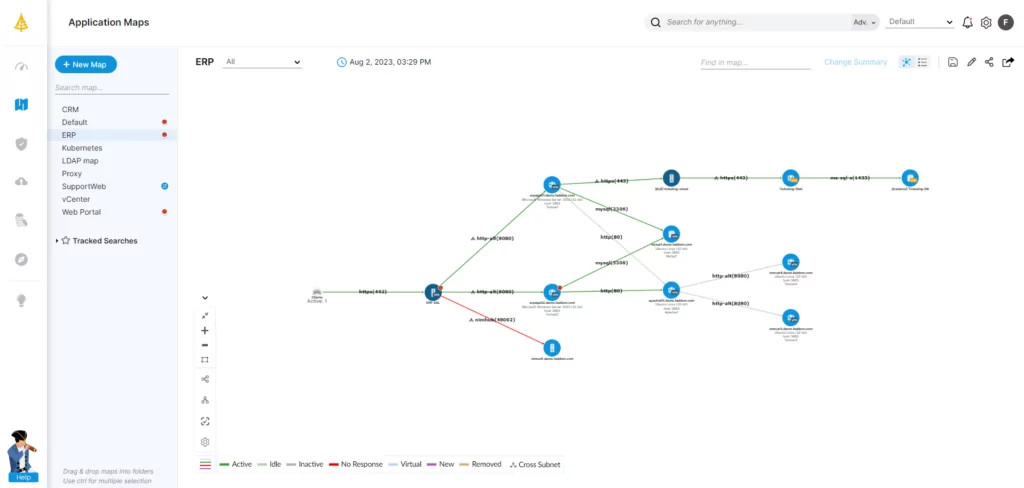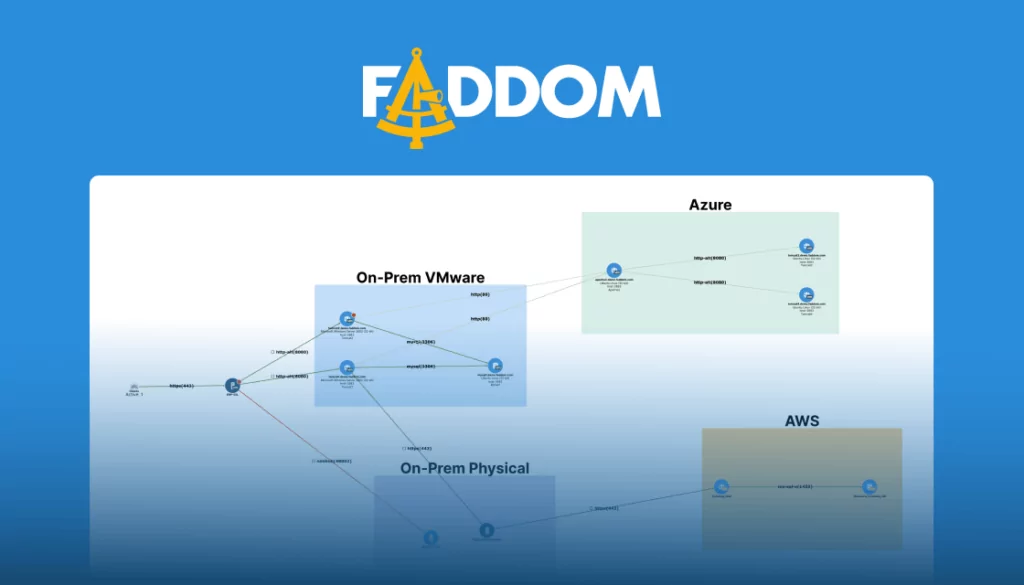The growth, transformation, agility, and competitiveness of every organization are now predicated on their application inventory and how they use it in the digital age. Adapting to change and challenges by keeping pace with operational and customer needs means that many SMBs and enterprises have amassed hundreds of applications.
This creates a complex IT infrastructure where rationalizing and making the most of those applications depends on visibility and a host of other factors. This involves keeping track of applications in use, their dependencies, and the entire lifecycle, as well as dealing with compliance management, cost optimization, and more. Accomplishing all of this starts with understanding the nature of an application inventory.
This is part of a series of articles about Application Portfolio Management
Table of Contents
Toggle- What is an Application Inventory?
- Benefits of Maintaining an Application Inventory
- What Application Information Should an Inventory Include?
- Tips from the Expert
- Criteria for Selecting an Inventory Management Tool
- Feature Set and Functionality
- Best Practices in Application Inventory Management
- The Role of ADM in Application Inventory
What is an Application Inventory?
An application inventory is much more than the complete list of applications in a business. This inventory must provide a breakdown of their location across a hybrid environment (on-premises, public/private cloud) and SaaS.
An application inventory is a living document that details not just what applications are in use but also information on licensing, user data, and any other relevant metadata. While this inventory will continually grow, the lifecycle of many legacy apps will end, with organizations replacing them with more efficient applications.
Factors such as shadow IT, application licensing, dependencies, and which business capabilities an application belongs to can make it difficult to create a comprehensive inventory. However, as a major component of a business’s operational technology and information technology architecture, an application inventory brings many important benefits.
Learn more in our detailed guide to application portfolio management tools
Benefits of Maintaining an Application Inventory
Today, every business is a software business, so it’s critical to understand the many advantages of maintaining an application inventory in terms of operational security and efficiency.
Enhanced Visibility and Control
A comprehensive application inventory offers a clear view of an organization’s software assets, providing invaluable insights into what’s being used, by whom, and how often. This enables maximum coordination and operational efficiency by the organization.
Learn more in our detailed guide to application portfolio management metrics
Improved Compliance with Licensing and Regulatory Requirements
Since applications handle a great deal of workflow data in every organization, maintaining regulatory compliance is a crucial part of application inventory management. A detailed inventory helps organizations navigate this complex area by tracking software licenses and usage.
Every application can introduce security vulnerabilities, so the inventory helps ensure proper governance for patching, updates, and versioning to guard against them. This not only allows organizations to avoid the hefty fines associated with non-compliance but also ensures adherence to industry standards.
Optimized Application Spending and Usage
Licensing costs can easily get out of hand across an organization, and the proliferation of shadow IT can make it difficult to maintain regulatory compliance.
By having the means to discover and map applications and their dependencies, organizations can identify redundancies and underutilization, thus paving the way for strategic software investment and cost optimization.
Reducing costs is always a priority, and having multiple applications and/or unnecessary use licenses leads to unnecessary expenditure. Having visibility into this via an accurate application inventory sets the stage for application rationalization, which is all about organizations reducing their number of applications for greater efficiency, less complexity, and cost optimization.
What Application Information Should an Inventory Include?
Application inventories require compiling vital information to make them useful and actionable within the business. An application’s name, version, and description of what it does are just the start of the inventory data.
Then comes licensing details, including expiration dates, usage terms, and lifecycle info such as end-of-life and replacement needs. Deployment data indicates if the application is on-premises, cloud (SaaS or cloud-native), or hybrid. This would include any SaaS contract start and end dates.
Access, Licensing, Compliance, and Security Data
It’s important to record all associated application functions, processes, and values for the business and determine if it is mission-critical, which often means it has numerous dependencies. Every application should have user access information to track its frequency of use, the number of active users versus purchased licenses, and whether pricing is based on users or the number of licenses.
Support and maintenance records, along with compliance and security data, must also be kept updated for each application.
Application Dependencies
Many apps that are not mission-critical will have dependencies where they integrate with other apps, databases, and aspects of the IT architecture. Understanding and mapping these dependencies is vital to current and future management, including everything from business continuity/disaster recovery to replacement, maintenance, and migration.
Given all of the above aspects of application inventory management, organizations will require the right tool for the job.

Lanir specializes in founding new tech companies for Enterprise Software: Assemble and nurture a great team, Early stage funding to growth late stage, One design partner to hundreds of enterprise customers, MVP to Enterprise grade product, Low level kernel engineering to AI/ML and BigData, One advisory board to a long list of shareholders and board members of the worlds largest VCs
Tips from the Expert
In my experience, here are tips that can help you better manage and optimize your application inventory:
-
Incorporate business impact analysis into your inventory
Go beyond tracking application details and dependencies—evaluate the business impact of each application. This includes understanding which applications are critical to revenue streams, customer experience, or compliance.
-
Automate shadow IT discovery
Use network monitoring tools and AI-powered solutions to uncover unauthorized or unsanctioned applications. Shadow IT can introduce vulnerabilities and unnecessary costs, so identifying and integrating them into your inventory is crucial.
-
Prioritize applications for modernization or replacement
Use a scoring system that considers factors like performance, cost, criticality, and alignment with business goals to prioritize which applications need updates, replacement, or migration to the cloud.
-
Leverage predictive analytics for lifecycle management
Implement analytics to forecast application lifecycles. This includes predicting when an application will likely become obsolete based on usage trends, vendor support timelines, or emerging technology disruptions.
-
Integrate application inventory with broader IT governance tools
Connect your application inventory to IT service management (ITSM) and enterprise architecture platforms to create a unified system for managing changes, tracking configurations, and aligning IT operations with strategic objectives.
Criteria for Selecting an Inventory Management Tool
Choosing an application inventory management tool requires considering several key criteria. While the goal is to ensure that the solution aligns with current business requirements and objectives, it must also be capable of adapting to an organization’s needs over time. Below, we cover some important factors to consider.
Real-Time Tracking and Reporting
Tools that offer real-time insights can transform decision-making processes, allowing for agile responses to the ever-changing business and technology landscape.
Scalability and Flexibility
Select a tool that grows with the business. Make sure it can adapt to any increasing complexity and volume of applications without performance hitches while easily integrating with existing tools and systems.
Simple User Interface
An intuitive user interface ensures the tool is accessible to all stakeholders, fostering a culture of transparency and accountability across departments.
Feature Set and Functionality
The chosen tool should offer a robust set of features that cater to the specific needs of an organization’s application management strategy.
Best Practices in Application Inventory Management
The importance of application inventory management cannot be overstated for the functionality of a business, ranging from internal operations to customer experience. Choosing the right tool is only the first step since the use of that tool must be guided by best practices that optimize the use of the inventory.
Regular Audits and Rationalization
IT must regularly assess each application in the inventory to determine everything from business value and performance to cost-effectiveness and usage.
Centralized Ownership and Business Objectives Alignment
The IT team should assign a dedicated sysadmin to own the inventory process and ensure accountability and consistency. This centralized approach enables lifecycle tracking. IT and department managers should work closely to make sure that every application in the inventory aligns with current strategic goals and objectives.
Performance Monitoring, Risk Management, and Compliance
Each organization must continuously monitor application performance to guarantee they meet agreed-upon service levels and user expectations. This includes the identification and management of risks, such as security vulnerabilities, compliance issues, and operational risks, which are part of establishing strong governance and compliance processes. IT service management processes need to also integrate with the application inventory so that inventory data informs daily IT operations.
Implement Scalability, Flexibility, and Cost Management for Continuous Improvement
Application scalability and flexibility across the entire inventory enable the business to adapt to changing business and market needs. Data analytics from application discovery and dependency mapping software, along with other inventory tools, can affect everything from cost management to future application migration and use.
Ensure the Application Inventory Is Thorough
An application inventory is only useful if it is comprehensive, with every detail continuously updated, including functionality, costs, dependencies, users, technology stack, etc. This allows the business to develop a clear picture of what they have and the means to uncover any missing applications or associated dependencies and metadata.
The Role of ADM in Application Inventory
The right application discovery mapping (ADM) tool supports a comprehensive view of the application inventory by discovering all applications and their dependencies across a hybrid environment.
An ADM tool can also identify potential risks and ensure compliance with regulatory requirements while providing insights into which applications are best suited for migration. It additionally facilitates rationalization by helping to identify underutilized resources while enabling cost savings through decommissioning, consolidation, and much more.
An application inventory is not just a record-keeping exercise; it’s a strategic asset that, when effectively managed, can yield significant benefits for an organization. With the right application inventory and discovery tools, every business can achieve a level of operational clarity that not only mitigates risk but also paves the way for informed decision-making and strategic planning.
With Faddom, you can visualize your on-premises and cloud infrastructure in as little as one hour and immediately see all your servers and applications and how they are dependent on each other. To learn more, start a free trial in the sidebar today!








